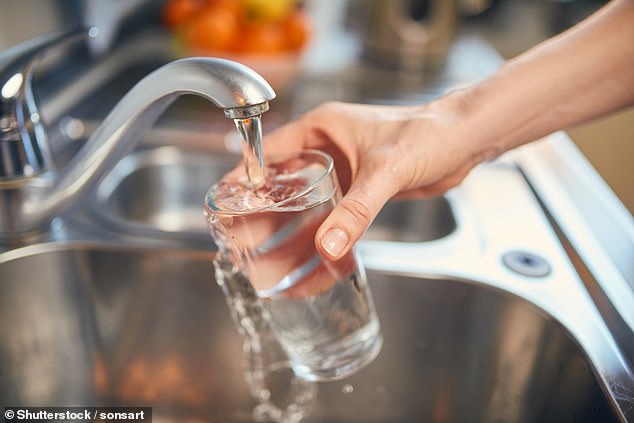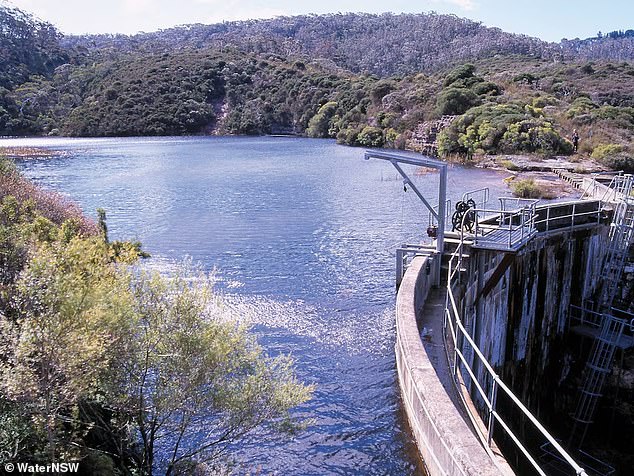A dam has been closed after being identified as the source of so-called “forever chemicals” that have contaminated the water supply of 41,000 Sydney residents.
WaterNSW revealed on Wednesday that the presence of per- and polyfluoroalkyl substances (PFAS) in the Blue Mountains water supply was coming from the Medlow Dam in Medlow Bath, west of Sydney.
In 2023, the World Health Organization declared perfluorooctanoic acid (PFOA), which is one of approximately 14,000 known PFAS variants, to be a class one human carcinogen.
PFOA was one of the most frequently detected chemicals at Medlow Dam.
“This dam does not supply raw water directly, but as a precautionary measure it has been disconnected from the supply while further investigations are carried out,” a statement from WaterNSW read.
Water from Medlow Dam joins water from other sources to supply Cascade’s water filtration plant.
A WaterNSW spokesperson told The Sydney Morning Herald that the water supplied from the Cascade plant to local communities is safe for consumption and meets Australian drinking water guidelines.
But the amount of PFAS allowed in drinking water is subject to new limits in the United States, where laws are much more restrictive than in Australia.
On Wednesday, WaterNSW revealed the presence of perfluoroalkyl and polyfluoroalkyl substances (PFAS) in the Blue Mountains water supply from the Medlow Dam (pictured) in Medlow Bath, 108km from Sydney.
Earlier this month, a senior policy adviser at the International Contaminants Elimination Network said Australia is falling behind other countries when it comes to drinking water safety.
“Australia cannot continue to use drinking water standards that are an international disgrace,” Dr Mariann Lloyd-Smith told ABC Radio National.
“Australian standards… are outdated, unrealistic and do not protect human health. We really need to act quickly on these chemicals.
“Especially when it comes to drinking water, something that everyone has to consume. It is totally unacceptable.”
WaterNSW has been working for months to find the source of elevated PFAS levels at the Cascade filtration plant, which provides drinking water to the millions of people who visit the world heritage area each year, as well as locals in the Blue Mountains.
The levels found at the plant were approximately 300 times higher than those at Warragamba Dam, Sydney’s main source of drinking water.
Sampling results released Wednesday showed the source of the contaminants was likely high levels of PFAS at Medlow Dam, which exceeded national safety standards.
WaterNSW said all dams would be monitored and preliminary sampling indicated Medlow Dam was the only one in its network with elevated readings.
“WaterNSW will keep the community informed as the investigation progresses and will work closely with NSW Health and Sydney Water to ensure drinking water remains safe,” the statement added.
In Australia, PFAS chemicals have been widely used in firefighting foam at Defence Force bases due to their resistance to heat and flames.
Developed in the 1940s and 1950s, these chemicals are also known for their water and stain resistance and are used in products such as raincoats and nonstick pans.
Dr Nick Chartres, from the University of Sydney’s Faculty of Medicine and Health, said they are “the most mobile, persistent and toxic chemicals in the world”.

However, Dr Lloyd-Smith advised against buying bottled water to use instead of tap water. File image
“We know they can penetrate the Arctic ice caps, the Antarctic ice caps, and the sediments on the sea floor. Basically, they travel everywhere,” he said.
The presence of PFAS in drinking water led to new, stricter regulations in the United States.
Most Australians are likely to already have very low levels of PFAS in their bodies due to the use of sunscreen and cosmetics.
But prolonged exposure, which can occur from drinking contaminated water over a long period, can lead to immune and heart problems, and can also affect fetal and infant growth.
Dr. Chartres said the U.S. Environmental Protection Agency found that “based on the best available evidence that we have … there really is no safe level (of exposure to PFAS).”
“So if you’re exposed throughout your life, at any level, your risk of getting these diseases starts to gradually increase based on the level of exposure.”
He said the change in US law should be a wake-up call for Australia.
“Now we have to look at that and say, how do our standards compare? … And if there is some kind of divergence from Australian laws, why is there a divergence?”
In the United States, the maximum allowable level of PFOA and another variant, perfluorooctane sulfonate (PFOS), in drinking water is four parts per billion.
But in Australia, PFOS and perfluorohexanesulfonic acid (PFHxS), another variant of PFAS, are permitted up to a level of 70 parts per billion.
PFOS and PFHxS were also found at Medlow Dam.
Dr Lloyd-Smith However, there is a warning against purchasing bottled water to use instead of tap water.
“We have also found PFAS in bottled water, so that is not the solution,” he explained.
Filtration systems can reduce PFAS levels in drinking water, but they are expensive and unaffordable for many people.
Dr Lloyd-Smith said people should try to reduce their exposure to PFAS beyond their presence in drinking water.
She advised people to check labels and read the ingredients of the makeup products they use.
People should also research how their clothes, food and packaging are made, and what chemicals they might contain.
“Australia should… assess (PFAS) as a class and seek to restrict and eliminate all uses of PFAS,” Dr Lloyd-Smith said.

